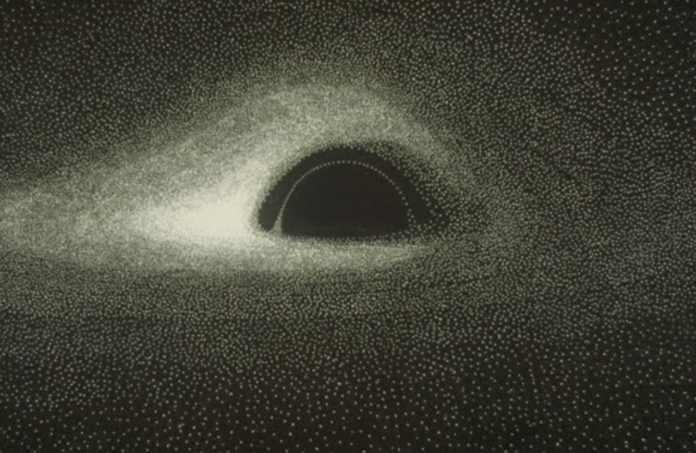Gravitational-wave observatories have been detecting black hole mergers for the past six years, confirming a crucial prediction of Albert Einstein’s theory of gravity. However, there is a catch: many of these black holes are very enormous.
Now, a team of scientists from the University of Hawaii at Mnoa, the University of Chicago, and the University of Michigan at Ann Arbor have come up with a new solution to this problem: black holes grow as the universe expands.
Since the Laser Interferometer Gravitational-Wave Observatory (LIGO) made the first detection of merging black holes in 2015, astronomers have been constantly stunned by their huge masses. Blackhole mergers are observed by gravitational waves, which are ripples in the fabric of spacetime predicted by Einstein’s theory of general relativity, despite the fact that they emit no light. Because merging black holes emerge from enormous stars that can’t keep themselves together if they get too big, physicists originally predicted that black holes would have masses less than 40 times that of the Sun.
Many black holes with masses higher than 50 suns have been discovered by the LIGO and Virgo observatories, with some as massive as 100 suns. There have been numerous formation scenarios hypothesized to produce such big black holes, but no one theory has been able to explain the diversity of black hole mergers observed thus far, and there is no consensus on which combination of formation scenarios is physically possible. This new study, published in the Astrophysical Journal Letters, is the first to prove that black hole masses of both enormous and small can arise from a single pathway, in which black holes gain mass from the expansion of the universe itself.
Usually, astronomers model black holes as non-expanding universes.
“It’s an assumption that simplifies Einstein’s equations because a universe that doesn’t grow has much less to keep track of,” says Kevin Croker, a professor at the UH Mānoa Department of Physics and Astronomy.
“There is a trade-off though: predictions may only be reasonable for a limited amount of time.”
Because the individual events detected by LIGO–Virgo last only a few seconds, this simplification is reasonable when evaluating any one event. However, these identical mergers could take billions of years to complete. The universe expands dramatically between the birth of a pair of black holes and their eventual merger. When the more delicate features of Einstein’s theory are properly explored, a shocking option emerges: black hole masses could expand in lockstep with the cosmos, a phenomenon called cosmological coupling by Croker and his team.
Light, which loses energy as the universe expands, is the most well-known example of cosmologically-coupled substance.
“We thought to consider the opposite effect,” says research co-author and UH Mānoa Physics and Astronomy Professor Duncan Farrah. “What would LIGO–Virgo observe if black holes were cosmologically coupled and gained energy without needing to consume other stars or gas?”
The researchers tested this theory by simulating the birth, life, and death of millions of massive star pairs. The size of the cosmos was then linked to any pairs where both stars died to produce black holes, commencing at the time of their deaths. The masses of these black holes grew as the cosmos expanded, spiralling toward one other. When they combined, the result was not only additional huge black holes, but also many more mergers. When the scientists compared the LIGO–Virgo data to their predictions, they found that they were fairly close.
“I have to say I didn’t know what to think at first,” says research co-author and University of Michigan Professor Gregory Tarlé. “It was a such a simple idea, I was surprised it worked so well.”
This new model is significant, according to the researchers, because it does not require any change to our present knowledge of stellar origin, evolution, or death. The new model and our current facts coincide simply because realistic black holes don’t exist in a static universe. However, the researchers were quick to point out that the enigma surrounding LIGO–huge Virgo’s black holes is far from solved.
“Many aspects of merging black holes are not known in detail, such as the dominant formation environments and the intricate physical processes that persist throughout their lives,” according to research co-author and NASA Hubble Fellow Michael Zevin.
“While we used a simulated stellar population that reflects the data we currently have, there’s a lot of wiggle room. We can see that cosmological coupling is a useful idea, but we can’t yet measure the strength of this coupling.”
Kurtis Nishimura, a co-author of the study and a professor of physics and astronomy at UH Mnoa, expressed confidence for further tests of this innovative concept, “As gravitational-wave observatories continue to improve sensitivities over the next decade, the increased quantity and quality of data will enable new analysis techniques. This will be measured soon enough.”
You were reading: As the universe expands, black holes grow as well
